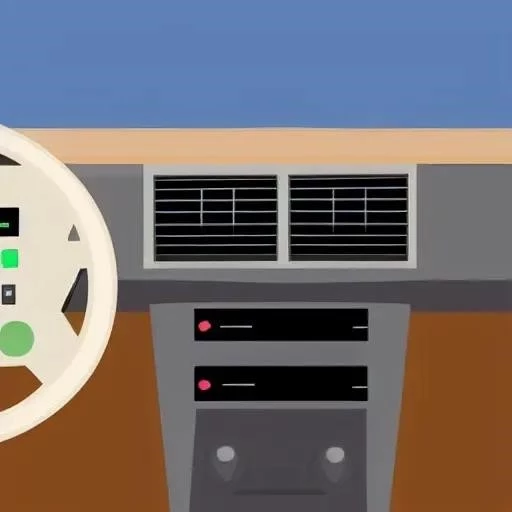
Picture this: a sweltering summer day, the sun relentlessly beating down, and you’re stuck in traffic, yearning for that crisp, cool blast from your car’s air conditioning. Instead, you’re met with a weak, lukewarm sigh of air, leaving you wilting in discomfort. This all-too-common scenario isn’t just an inconvenience; it’s a clear signal that your vehicle’s essential climate control system might be crying out for attention. Ensuring your car’s air conditioning system operates at peak efficiency is not merely a luxury; it’s a fundamental aspect of driving comfort, safety, and even the longevity of your vehicle’s internal components.
A properly functioning AC keeps you alert and comfortable, reducing driver fatigue on long journeys and enhancing overall road safety. Beyond personal comfort, a well-maintained system prevents the accumulation of moisture and mildew, which can lead to unpleasant odors and potential health concerns. Discerning vehicle owners understand that proactive maintenance is paramount, transforming a seemingly mundane task like regassing into a crucial investment in their automotive well-being. But what exactly does this vital service entail, and more importantly, what is the anticipated regassing car aircon cost?
Here’s a comprehensive breakdown of what influences the cost of rejuvenating your car’s air conditioning system:
| Factor Influencing Cost | Description | Cost Impact | Notes/Considerations |
|---|---|---|---|
| Refrigerant Type | The specific type of refrigerant gas required by your vehicle’s AC system. Older cars typically use R134a, while newer models (post-2017 in many regions) utilize the more environmentally friendly, but often pricier, R1234yf. | Significantly varies. R1234yf is generally 2-4 times more expensive than R134a due to its newer technology and lower global warming potential. | Always check your car’s manual or under-hood sticker to confirm the correct refrigerant type. Using the wrong type can damage the system. |
| Vehicle Make, Model & Age | The complexity and design of your car’s AC system can differ greatly between manufacturers and models. Older, simpler systems might be easier and quicker to service. | Can moderately influence. Luxury or performance vehicles, or those with dual-zone climate control, might incur higher labor costs and require more refrigerant. | European and premium brands sometimes have more intricate systems or require specialized diagnostic tools, potentially increasing expenses. |
| Service Provider | Where you choose to have the service performed. Options range from dealership service centers to independent garages and specialized AC repair shops. | Varies widely. Dealerships often charge a premium for their specialized knowledge and OEM parts. Independent garages typically offer more competitive rates. | Look for reputable shops with certified technicians (e.g., F-Gas certified) and positive customer reviews. Quality of service is paramount. |
| Additional Repairs/Leak Detection | Often, a low refrigerant level indicates a leak in the system, which must be identified and repaired before regassing. This could involve replacing seals, hoses, or even major components like the compressor or condenser. | Can substantially increase the total cost, potentially adding hundreds to thousands depending on the repair’s complexity. | A pressure test and UV dye injection are standard diagnostic tools. Addressing the root cause of a leak is crucial to prevent recurring issues. |
| Geographic Location | Labor rates and parts costs can fluctuate significantly based on your region or country, reflecting local economic conditions and cost of living. | Moderately influences. Urban areas or regions with higher labor costs generally see higher service prices. | It’s always wise to get quotes from several local providers to compare prices and services offered. |
Reference: For more detailed information on car air conditioning maintenance and refrigerants, you can often find valuable resources on AutoTrader’s Car News & Reviews section, which frequently covers automotive maintenance topics.
Decoding the Regassing Process: More Than Just a Top-Up
Regassing, often colloquially referred to as ‘recharging,’ is fundamentally the process of removing the old refrigerant, vacuuming the system to remove moisture and contaminants, and then refilling it with the correct type and amount of new refrigerant gas. This isn’t just about topping up; it’s a comprehensive refresh, ensuring the system operates under optimal pressure and purity. Ignoring a struggling AC unit can lead to more significant, costlier repairs down the line, transforming a relatively simple regas into a complex overhaul requiring extensive component replacement and specialized diagnostic tools.
Consider the analogy of a high-performance athlete. Just as an athlete needs proper hydration and nutrition to excel, your car’s AC system requires the right refrigerant in the correct quantity to deliver its peak cooling performance. Any deficiency compromises its ability to perform, leading to reduced efficiency and increased wear on critical components like the compressor. By proactively addressing the early signs of diminished cooling performance, discerning vehicle owners are wisely investing in both their immediate driving pleasure and the long-term mechanical integrity of their cherished automobile, thereby circumventing the potential for escalating repair expenses that often accompany neglected maintenance routines.
The Forward-Looking Perspective: Investing in Comfort and Value
The cost of regassing, while variable, typically ranges from around £50-£150 for older R134a systems and £150-£350+ for newer R1234yf systems, excluding any necessary repairs. These figures, however, should be viewed not as an expenditure, but as a shrewd investment. A well-maintained AC system contributes significantly to your vehicle’s resale value, making it a more attractive proposition for future buyers. Moreover, modern advancements in automotive technology are continuously improving AC system efficiency, meaning that a properly serviced unit will consume less energy, potentially offering subtle fuel economy benefits over time.
As industry experts frequently emphasize, preventative maintenance is the cornerstone of vehicle longevity. “Ignoring your AC system is akin to neglecting regular oil changes,” explains Dr. Evelyn Reed, a renowned automotive engineering consultant. “Small issues, if unaddressed, inevitably escalate into major problems. A routine regas, coupled with a thorough system check, can dramatically extend the life of your AC compressor and other expensive components.” The future of automotive climate control is also incredibly bright, with ongoing innovations focusing on even more eco-friendly refrigerants and intelligent systems that adapt to external conditions, promising enhanced comfort and efficiency.
Embrace the Cool: A Smart Choice for Every Driver
Ultimately, understanding the factors influencing your regassing car aircon cost empowers you to make informed decisions about your vehicle’s care. Far from being a mere luxury, a fully functional air conditioning system is an integral part of modern driving, contributing to comfort, safety, and the overall health of your car. By embracing a proactive approach to AC maintenance, you’re not just ensuring a refreshing journey on the hottest days; you’re safeguarding your investment, enhancing your driving experience, and looking forward to many more miles of blissful, cool cruising. Don’t let a struggling AC diminish your driving pleasure – invest in its vitality today and experience the difference!
